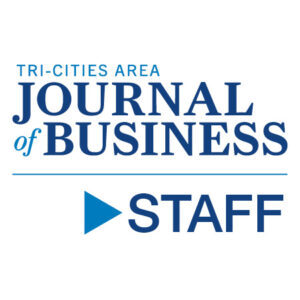
Home » Secretary Granholm: Please visit Hanford
Secretary Granholm: Please visit Hanford

July 13, 2022
As press releases go, the U.S. Secretary of Energy’s travel schedule is mundane stuff.
Jennifer Granholm, President Joe Biden’s Secretary of Energy, traveled to Sydney, Australia, in mid-July.
In 2022, she also traveled to Tampa, Florida, to tout the benefits of clean energy, to Michigan (her home state) to announce more than $3 billion for domestic battery production and to many more spots.
Her other destinations this year included Southern California, Arizona, Nevada, West Virginia, Michigan (again), Kentucky, Paris (yes, France), South Carolina, Mexico City and Albany, New York.
Noticeably absent from her itinerary: the Hanford nuclear reservation in Eastern Washington.
U.S. Rep. Dan Newhouse, R-Sunnyside, invited Granholm to tour Hanford in April 2021, shortly after she was confirmed to the job.
It is Newhouse’s custom to invite the new DOE secretary to tour Hanford, one of the most costly and challenging sites in the DOE complex, as DOE itself routinely acknowledges.
Visiting Hanford – and the Tri-Cities – should be a top priority.
Plus, there’s no shortage of energy-related issues in our region.
The secretary can easily drop by the Pacific Northwest National Laboratory to talk about its work in the energy field.
There are also plenty of nearby dams worth visiting to help the secretary better understand the complicated issues related to calls to remove them.
Maryland-based X-energy is working with Energy Northwest of Richland and Grant County PUD on an 80-megawatt nuclear reactor on land already leased by Energy Northwest at Hanford.
The Tri-Cities boasts a Mid-Columbia Energy Initiative to foster clean energy tech. We are also hosting an Association of Washington Business Energy Solutions Summit in November.
DOE announced Granholm would visit Hanford in February 2022, but the trip reportedly was canceled because of Russia’s invasion of Ukraine. The war didn’t stop other travel, as her busy schedule in recent months shows.
DOE’s media relations office in Washington, D.C., has not responded to multiple inquiries about Granholm’s Hanford plans. Locally, Hanford officials confirm she has not made a non-public visit, and as of press time, no visits were announced.
Most Tri-Citians and state-level governmental officials understand what’s at stake at Hanford. It is a pivotal time for the site, which stopped producing plutonium for the nation’s nuclear weapons in 1987 and shifted to a cleanup mission a few years later.
The site is about to begin converting millions of gallons of radioactive and hazardous tank waste into glass at the Waste Treatment and Immobilization Plant.
Hanford consumes more than $2 billion of tax dollars each year. Operating the treatment plant – presuming a less costly approach is not substituted for the existing plan – will require a big budget bump.
Hanford is a big part of any DOE leaders’ job. We encourage Secretary Granholm to visit soon to learn more about it.
Opinion Our View
KEYWORDS july 2022





